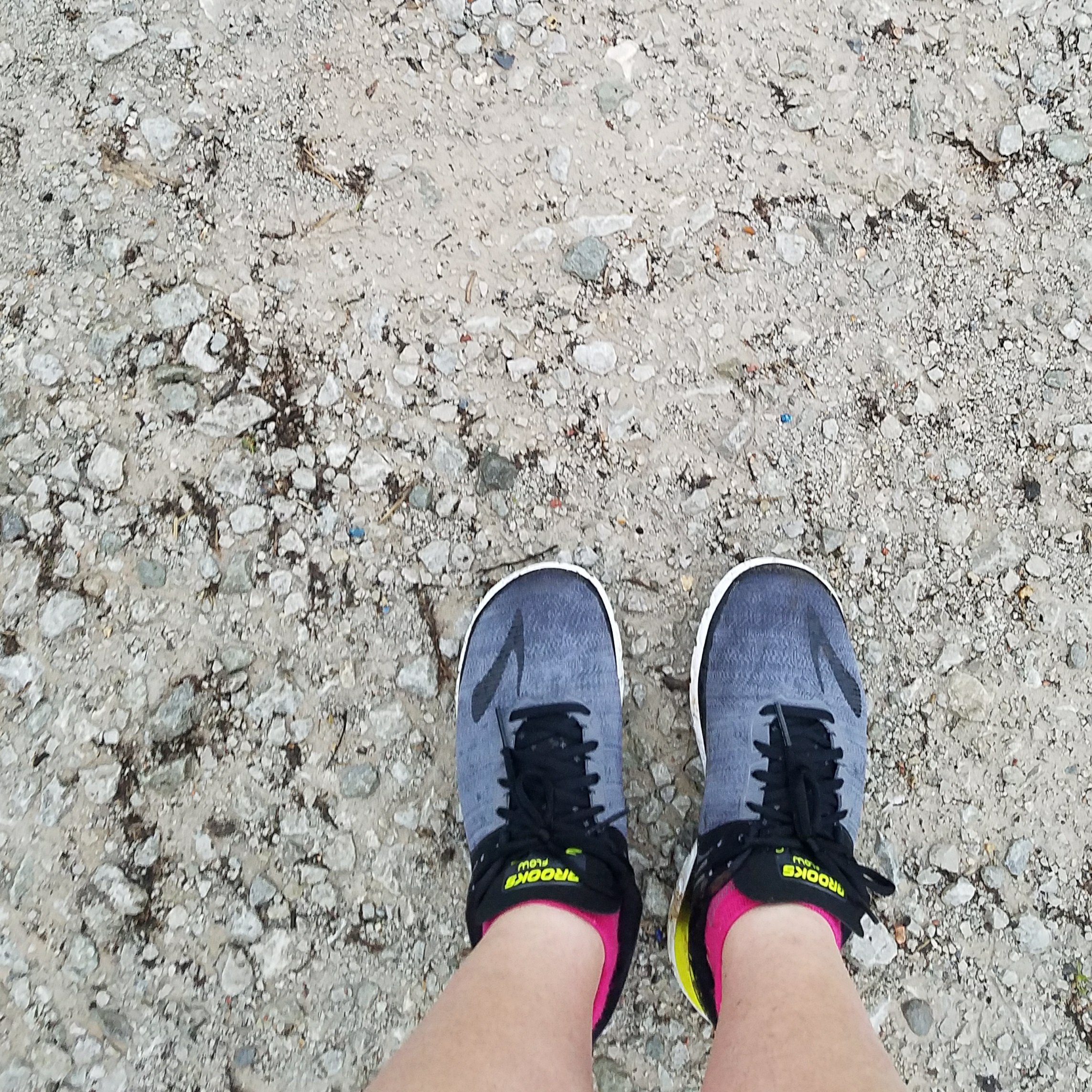One of the first things running gave me was a(n eventually) self diagnosed and self treated case of exertional compartment syndrome.
It started with my very first run – debilitating pain on the outside of my lower leg. If the tibia were 12 o’clock, the pain would be 2 o’clock.
I knew it wasn’t ‘shin splints’. It wasn’t bone, joint, or connective tissue pain. It was muscular. It felt like an intense cramp in the big meaty muscle on the upper, outer lower leg.
But if you try to get information on pain and mention shins or lower leg and guess what… ‘you’ve got shin splints’.
But I knew I didn’t.
I kept running on it. Stretching it. Massaging it. Foam rolling it.
I could get 10 mins into a run before the pain took over.
And it wasn’t just the pain. It pretty much rendered anything downstream unusable. That would be my ankle and foot. I completely lost ankle flexion. Have you ever tried running without ankle flexion? It’s not easy. I ended up crashing down on my right foot – without any of the natural ability to move fluidly or absorb impact.
I remember commenting to Matt, I feel like I’m stomping on that side. But I’m not trying to and I can’t stop.
All I knew to do at the time was stretch it. So after 10 minutes or so, when the pain got intense, I would stop and stretch. That would buy me another 5 or 10 minutes of running. And I’d stop and stretch again. This is how I went on until my run was finished.
When I finally stopped running, I could barely walk. my shins were cramping so bad. I’d collapse on the floor or the ground until they stopped burning.
And they would stop, eventually.
The good news is that I managed to go from ‘I haven’t ran in 20 years’ to almost finishwd with the c25k program with said pain. Because I’m a badass like that – haha.
But it was a big fight.
By this time I had built my mileage up to about 4 miles, and I was about a month away from my first 5k when I stumbled across ‘Exertional Compartment Syndrome’. The symptoms were everything I was experiencing. Hella pain in the outer lower leg. Muscular pain.
Compartment Syndrome is where the fascia surrounding the muscle will not expand with the muscle cutting off blood and oxygen. It’s a medical emergency.
Exertional Compartment Syndrome is the exercise induced little sister to Compartment Syndrome. When you exercise, the fascia surrounding the muscle will not expand with the muscle cutting off blood and oxygen supply. Since proper flow is reestablished soon after you stop the inducing activity it is not a medical emergency.
The treatments are either have surgery (where they cut the fascia and your muscle is no longer completely encased in it) or stop doing whatever is causing it (usually running).
Here’s the thing. I didn’t want surgery and I didn’t want to stop running.
I had almost accepted my fate when I heard barefoot style running would ‘cure’ Exertional Compartment Syndrome.
I didn’t really know about that… But I was pretty sure those barefoot running people were crazy. And they probably thought barefoot running cured everything. ‘Dry skin? Try barefoot running. Earache? You need to run barefoot!’ Know what I mean?
Crazy people. But I’ve been known hang out with other crazy groups of people like crossfitters, paleo and/or keto eaters, etc. And… I also know none of them are all that crazy if you hear them out. So…. I continued studying barefoot running.
It costs a pair of barefoot running shoes to give it a try. And if it doesn’t help my other 2 shitty options are still available. What did I have to lose?
So. I spent $70 on glorified water shoes with laces.
The absence or near absence, of shoes is not really the end goal. The goal is to change the way your feet are striking the ground, on the ball of the foot rather than the heel. The ultra thin, flexible shoes just allow you to to fully feel and control your footstrike. Mainstream shoes don’t.
After my first couple short forefoot runs I could tell Exertional Compartment Syndrome would likely be a thing of my past. No pain.
My Achilles, however, were on fire.
Forefoot running is supposed to take the impact of running and move it from your joints to your Achilles and calf. Rather than have the impact travel from your heel, to ankle, to knee, to hip in one hard shocking jolt (as it does with heel striking), forefoot striking transfers that impact to your Achilles and calf where it is absorbed in more of a spring like fashion.
An Achilles on fire and tight calves led to plantar fasciitis and metatarsal pain.
I couldn’t win! I was frustrated that I was building back my running distance so very slowly.
Thankfully those issues were expected, and normal, and treatable. That’s what I did. Lots of stretching, massage, and targeted strengthening exercises.
Once those issues seemed to be improving I could finally increase my speed and distance…
Which led to shin splints. The real ones!
Not everyone’s body is so uncooperative about running. I’ve had to fight for it, that’s for sure. One thing I can rest in though, if you’re willing to fight for it so aggressively, you don’t have to be uncertain about how much you want it.
I am still refining my form. But, for me anyway, forefoot seems to be the way to go.
